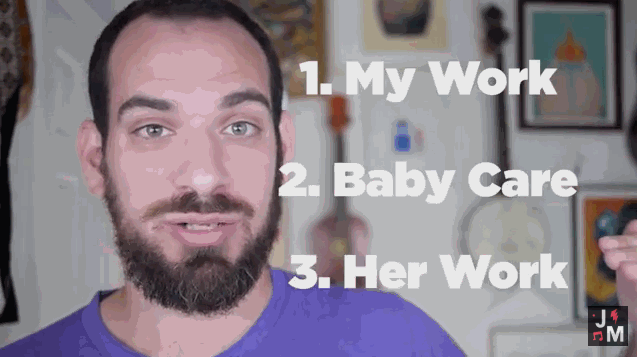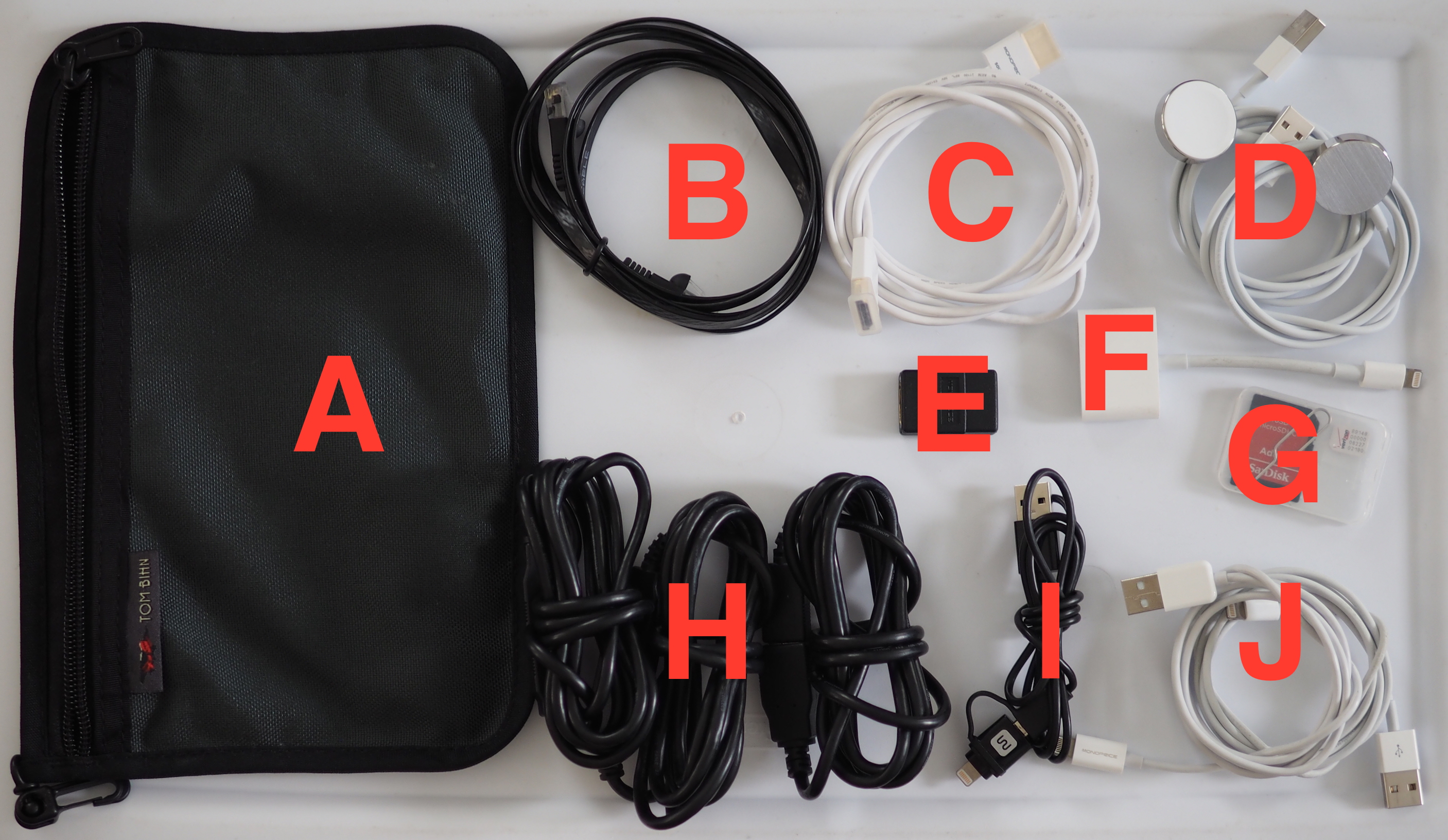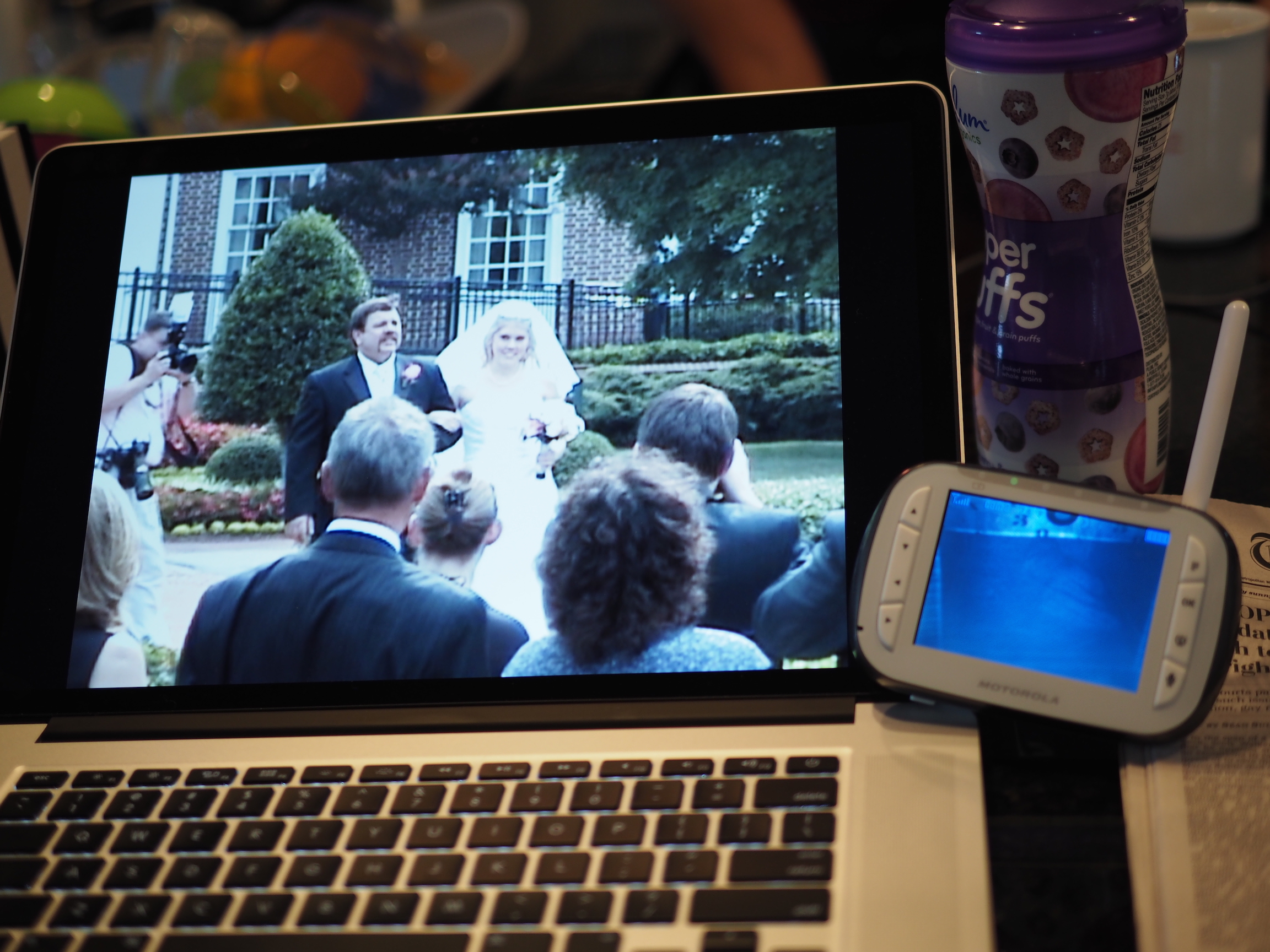I made a joke a while back, but as with all jokes, it’s funny because it’s true:
Interestingly, I never have to yell at @erinliss
for buying yet another purse, but I (justifiably) get scolded for yet another laptop bag.
— Casey Liss (@caseyliss)
July 16, 2015
Unsurprisingly, I just bought a new laptop bag: the Tom Bihn Cadet.
History
I’ve been through several bags over the years. My most recent daily use bag was the InCase Nylon Sling Sleeve. Though I’d classify it as a bag, it’s so slim that InCase called and treated it as a sleeve.
I loved that bag, because it was extremely light, and didn’t carry much. I consider that an advantage, as it forced me to travel light.
Regardless, after two or three years, it was starting to fall apart, and it was time to upgrade to something built better and a little larger.
Casey, Meet Tom
I can’t remember how I stumbled on Tom Bihn bags, but my first was a year
or two ago, when I got a Co-Pilot. I love my Co-Pilot, and it’s my go-to
murse satchel bag when traveling with only my
iPad Mini. I recently took it on a trip to Florida for a week, and it was perfect.
Plenty of space for my iPad, Go Pack, and other miscellany.
Speaking of my Go Pack, that pack is itself a Tom Bihn Organizer Pouch.
Last year, for Christmas, Erin gave me a Parental Unit. It has become our go-to diaper bag. Though a touch small for my taste, it’s built exceptionally well, and we really love it. You can read more about it in our baby stuff review.
Enlisting the Cadet
Much like my videos, I prefer my bags in landscape. Thus, I love messenger bags. Messenger bags aren’t for everyone, but outside of WWDC, I never typically carry a bag more than a few minutes at a time. That, and I try to travel as light as possible, so back pain is never an issue. (For WWDC, I rock a super-lightweight Targus backpack.)
When my InCase Sleeve finally gave up the ghost, I knew I was going to get a Tom Bihn bag. I knew I wanted a messenger bag, despite having heard great things about the Ristretto through the grapevine. I considered a Pilot to match my Co-Pilot, but it won’t hold a 15" laptop. After looking at a few other options, I felt like the Cadet would fit my needs the best.

The Cadet has a number of zippered pockets on the exerior; I’ll refer to them as:
- Front mini-pocket
- Front pocket
- Main pocket
- Back pocket
The mini-pocket is, well, mini. It’s not too much bigger than a few USB keys. The front pocket is for cables, a power supply, and other miscellaneous items. The main pocket is for the laptop, and the back pocket is for papers or magazines.
A nice touch, shared with my Co-Pilot, is that the back pocket has a zipper on the very bottom of it. This seems a curious choice, at first, but it allows the bag to be looped over the extended handle of a rollerboard suitcase.

Cachet
If the Cadet has an Achilles’ Heel, it’s the Cache. The premise is solid, but the execution is dubious.
The Cadet doesn’t have a padded, laptop-specific section, like most laptop bags do. Instead, it has a very clever system to make it checkpoint-friendly. At the top of the main pocket of the Cadet are two Gatekeeper Rail clips, which are clips on either side of ~1" straps. This seems… peculiar… at first.
Included with the Cadet is your choice of Cache; the Cache is a foam laptop (or iPad) sleeve that has two “rails” of nylon webbing on the back of it. By connecting these rails to the 1" straps with a second set of Gatekeepers, you end up with a sleeve that is secured to the inside of the Cadet, but can be pulled completely out of it. Thanks to the Cache being able to pull completely out of the Cadet, the Cadet is considered checkpoint-friendly.
My issue isn’t with the rails. It’s an ingenious system to allow for the cache to quickly and easily be slid in and out of the Cadet. The problem I have is with the Cache.

My brand-new 15" MacBook Pro is a very tight fit in the Cache. At first, that struck me as an advantage, since the fit will keep the laptop from jostling. However, it’s tight enough that it’s somewhat difficult to get the laptop out of the Cache. This is compounded by having no leverage when lifting the computer, since, by design, the Cache wants to slide out of the Cadet.
A minor issue, in the grand scheme of things, but a regular annoyance nevertheless. I’d much prefer it if the cache had another mount point for a Double Gatekeeper at the bottom. Most of the time, I’d keep the Cache mounted to the bottom of the Cadet. When traveling, I’d allow the rails to do their job.

Capacity
I try to travel as lightly as possible, but I also like to be prepared. Thus, I do keep a number of things in my bag.

In the main area of the Cadet, and shown at the top, are my iPad Mini, my MacBook Pro, and the Cache.
Below that, stored in the front pouch, is my Magic Mouse, a small bottle of hand moisturizer, extra batteries for my mouse, my MagSafe 2 Power Adadpter. Additionally, I keep a Tom Bihn Organizer Pouch (not included with the Cadet) holding a HDMI cable, iPhone charger, and Mini-USB charger. Finally, a spare pen, nail file, and my bluetooth headphones.
Finally, in the grey box, are the items that go in the front mini-pocket: some USB keys and breath strips.

In general, I love how much the bag stores, and the pockets that have been provided. It’s also super-useful to have rings at the top of the front pocket that allow me to clip a Key Strap or the organizer pouch to. I have my ID attached to the key strap, but that isn’t pictured.
Though Tom Bihn sells a specialized pouch for the Magic Mouse, one of the pockets within the front pocket is perfect for it.
The pen, batteries, and file go in the pen holders. The lotion goes into one of the larger pockets. My headphones and the power supply hang out in the bottom of the front pocket.
The main pocket is plenty big, and opens wide. The back pocket is large enough to hold a standard 8½" x 11" sheet of paper without it peeking out over the top of the pocket.

I have mixed feelings about the front mini-pocket. On the one side, it’s really shallow, and I don’t see any obvious reason why it couldn’t be deeper. On the other side, I can see a reason why it shouldn’t be deeper: I suspect items may get lost in there. All told, I think I’d like just a smidge more depth.
The front mini-pocket does do a great job for holding USB keys and my beloved breath strips just the way it is.
Having used the Cadet for a couple weeks now, I’ve definitely fallen in love with it. I don’t suspect that I’ll be seeking a new laptop bag anytime soon; in fact, I doubt I’ll even have a wandering eye.
It was a lot of money. Tom Bihn bags do not come cheap. However, you do get what you pay for, and the bags are very well constructed. Furthermore, a lot of thought goes into the way the bags are laid out. Everything in its right place, I never find myself hunting for anything.
In both my old InCase bag, and my Targus backpack, the pockets ended up being wastelands where my belongings went to get lost. Every time I reached in, I half expected to find missing socks in there. In the Tom Bihn, I always know exactly where to reach.
Aside from price, there is one other penalty for this sturdy construction and thoughtful layout: weight. My InCase bag was effectively negligible. The Cadet weighs just over 2 pounds, but that is still very light.
If you do what I did, and spring for the Absolute Shoulder Strap, you’ll be thankful. The portion of the strap that is on your shoulder is made with neoprene. That seems to be another odd choice, but ends up being a brilliant idea, as it’s quite a bit cushier than you’d expect. Additionally, it’s anti-slip, which instills more confidence.
The Tom Bihn Cadet is spendy, but so very worth it.


“I think I’m good for, I dunno, maybe 12 episodes?”
I’m discussing what would come to be Analog(ue) with Myke. We haven’t started the show yet, and I’m more than a little skeptical it will have the legs to last longer than a miniseries.
“Casey, I won’t expect more than 12, but let’s just see where this takes us before we put any limits on it.”
This is why Myke is a co-founder and I’m just a host.
This week — this past Sunday — we released episode 53. Clearly,
as much as it pains me to admit this, #mykewasright.
For a weekly show which started with episode 1, by getting to episode 53, that means we’ve made it a year.
Today is the one year anniversary of Relay FM, and of Analog(ue).
As we spoke about on this week’s show, a lot has changed for Relay in only a year. There are many more hosts than a year ago as well as more shows than a year ago. Furthermore, there is actually gender and greater topic diversity now, with more diversity improvements coming.
Last year, I was deeply honored to be invited to be part of the launch shows on Relay. This year, I’m deeply honored to be a part of a network that not only airs some of the best spoken word programming on the internet, but also cares so deeply about being more inclusive.
Also different this year is the way Myke and Stephen spend their time. Myke has been 100% dedicated to Relay for months now. Stephen has just left his day job, and is now splitting his time between Relay and other endeavors.
If the network Myke and Stephen created isn’t impressive, the business they created should certainly be.
Not to let a milestone be an excuse to rest on their laurels, Stephen and Myke have some new goodies for us. Yesterday, two new shows were announced:
- Liftoff, with Stephen and Jason Snell, discussing all things space.
- Top Four, with new Relay hosts Marco and Tiff Arment, ranking their top four entries in various categories.
With Marco joining Relay, and the recent debut of the wonderful Reconcilable Differences with John Siracusa, now all three hosts of the Accidental Tech Podcast have a home on Relay. If ATP didn’t pre-date Relay, it’s quite likely ATP would be a Relay show as well.
I’m so proud of Myke, of Stephen, and of us.
I’m excited for year two.
My buddy Jonathan Mann, of Song a Day fame, occasionally releases more reflective and introspective videos. One great one was The Story of GameJew, wherein Jonathan chronicles, well, how he came to be him.
Yesterday Jonathan released another of these videos, entitled Marriage & Feminism. This one hit home for me, and did so quickly. Jonathan’s son, Jupiter, is six months older than Declan is, and in many ways I’ve been quietly paying attention to see if there’s any hints to my future that I can glean from his tweets and songs.
The video is an examination of his relationship with his wife Juliana particularly as it relates to parenting. Too much of this reminded me of myself.
Jonathan says:
[Juliana] was physically attached to Jupiter [early in his life] — nursing him constantly — she didn’t have the luxury of choice about her obligations.
…
As we talked about [how we divide the labor], I vowed to step up and be better. 💪🏻 And while I’ve never done that exact same [egregiously selfish] thing again, variations on this issue have come up somewhat regularly ever since.

This sounds all too familiar.
He continues:
[Juliana] being better at [chores & maintaining the household] does not excuse the uneven contribution. I’m a grown-ass man, and I’m fully capable of taking on way more than I do, improving as I go.
Yikes. Looking in the mirror got a little uncomfortable at this point.
While our situations are not the same — Juliana works outside the home while we are lucky enough to be able to have Erin concentrate on parenting full-time — these struggles are exactly what we’ve faced.
In some ways, they’re compounded by Erin always working in the home: “Oh, you didn’t have time to get that laundry done? Okay.” “Huh, these dishes are still here?”
When I’m smart, these thoughts stay in my head. I remember that in every stage of life, caring for a child is a more-than-full-time job. Lately things have gotten even more complicated, as he’s now crawling through a house that we haven’t yet been able to fully babyproof. I remember that on top of taking care of Declan, Erin is also running errands, cleaning up after us (me), cooking dinner for the family, and doing all the things I can’t do because I’m not at home.
Unfortunately, I’m not always smart enough to keep those thoughts to myself.
Jonathan’s video has coalesced a lot of my very disjointed thoughts about my own behavior into one easy to digest video. As a parent, it was really eye opening to watch. If you’re someone that lives with anyone else, you’ll probably learn something about yourself as well.
After you watch the video, if you want to hear more about Jonathan & Juliana’s journey, you can also check out their podcast miniseries.
A year ago, I shared my “go pack”, which is a small bag that I keep loaded with the various cables I need when I travel. Having my go pack ready to go at any time makes me that much less stressed about traveling.
Since I shared a year ago, I’ve rejiggered what’s in the pack. Here’s my new setup:

As with before, let’s go through each item:
A — Tom Bihn Ballistic Nylon Organizer Pouch — $13
This is the pouch that all of the other items pictured live in. I have an
unhealthy obsession with laptop and iPad bags; Tom Bihn is quickly becoming
one of my favorite brands. Sturdy, functional, well designed.
B — SF Cable 6’ Cat6 Flat Ethernet Cable — $6
This is a very slim Ethernet cable, which I like to bring with me to hotel rooms.
Hotel WiFi is notoriously bad, but some hotels still have Ethernet jacks in their
rooms. This allows me to connect in an often much more reliable (and comparatively
snoop-resistant) way while adding little bulk to the pack.
C — Monoprice 6’ Ultra Slim HDMI Cable — $14
Most hotel rooms these days also have flat panel TVs, and these nearly always have a
free HDMI port. Like the Ethernet cable above, this HDMI cable is super slim and light,
which makes it no burden at all to carry.
Curiously, however, this HDMI cable is directional. Apparently the RedMere
technology that allows it to be so slim requires the cable to be directional. When I
first tried using the cable I thought it was DOA, until I looked closely at the connectors
and saw they were labeled.
D — Apple Watch Magnetic Charging Cable x 2 — $30
A new addition, I’m now carrying two Apple Watch charging cables. Originally, I
tried to get by with just one, thinking that more often than not, it would be
just me traveling, and there was no need for another duplicate Apple Watch
charger for Erin. As it turns out, I was wrong. We almost always travel together,
so I am carrying two chargers. The ones that come with the Watches never leave
home.
E — HDMI Coupler — $2
Though I haven’t actually needed it yet, I thought it may be nice to keep one of
these around just in case I find an occasion to use it. Small in both size and
price, it’s easy to carry it just in case.
F — Apple Lightning Digital AV Adapter — $50
Earlier I mentioned the HDMI cable, so what video/audio am I running through it? This
(really expensive) adapter allows me to connect my iPhone or iPad to the TV in the
room to play whatever I want. I’ve used it to play media on the device, Plex,
Netflix, my Slingbox, etc.
G — Verizon SIM card and SD Card
As I’ve talked about several times in the past, I typically keep a T-Mobile SIM in
my RetinaPad Mini, but occasionally find myself in situations where I need reliable
coverage. Should that happen, I can pop in the Verizon SIM it came with, and pay for
service on it.
The SD card is really there because I like keeping the SIM in that case.
H — Monoprice 6’ USB Male to Female Extension x 3 — $1.50 each
Having a trio of these around makes charging phones at night way nicer. Since the
Dynex power strip is likely near one side of the bed, these two extensions hooked together
provide for an extra 12’ of slack on the standard charge cable. This way both Erin and I
can have our phones on our respective bedside tables.
Additionally, I’ve found that since hotel power outlets are often nowhere near the bed, I like to have an extension for my phone as well. Thus, I carry a third. Two get linked for Erin, and one used alone for me.
These extensions are also driving me nuts. They make up a tremendous portion of the volume of the go pack. I have been searching for slimmer USB extensions to use, but haven’t been able to find any.
I — Monoprice 3’ USB to Micro USB & Lightning Cable — $15
This cable has two ends on it, a Micro USB for charging miscellaneous other
accessories such as a battery pack, as well as a standard Lightning charger.
Kills two birds with one stone.
J — Monoprice 3’ USB to Lightning Cable x 2 — $8 each
I also carry two standard USB to Lightning cables. The ones pictured are from
Monoprice, and they’re my preferred third-party lightning cable. They’re sturdy,
but the Lightning side is also thin enough to fit in most standard cases. I’ve
had far worse luck with the Amazon equivalents.
Anker PowerPort 5 USB Charging Station — $20
Not pictured, I also just picked up an Anker 5-port USB charging station. I
long resisted doing so, because I preferred carrying a slimline power strip.
However, upon adding two more USB devices (our Watches) to the mix, I finally
gave up and got this charging station. I chose the 5-port because both Erin
and I have a phone and a watch, plus my iPad, makes 5.
Amazon Fire TV Stick — $40
Not pictured, I occasionally bring our Fire TV Stick with us when we travel.
I love our Fire TV Stick, as it’s super portable, works really well, and
allows really easy access to Plex, Netflix, and our Slingbox on a hotel room
TV. Furthermore, with a recent update, the Fire TV Stick can now join captive
WiFi networks. These are the ones you typically find at a hotel, which force
you to agree to terms of use, or enter your room number, before you can use
the internet.
The updated total cost of the bag plus the charging station was around $200, not including the Fire TV Stick. That’s a lot of money. However, it was worth it to me to know that at any time, I just have to grab the go pack and I’m ready.
At my parents’ house this weekend, my dad brought out an old
Sony DV video camera, and a box of old tapes. One of the tapes was labeled
Wedding 2007. As expected, it was our wedding.
I had never seen the video before. It only existed on Dad’s DV tape, and was never imported into a computer for transmission. Thanks to some dodgy Thunderbolt to FireWire converters, and QuickTime, I was able to import it today.
As I was recording it, I looked down, and realized what was going on. Declan was napping, so the monitor was sitting next to the computer.
I was watching our wedding video, for the first time, as our son slept in the next room.
My what a difference a few years makes.

I’ve always been envious of the photographs of so many of my friends. Tiff, Shawn, Marco, and Dave especially have a phenomenal eye for pictures. I’ve long wished for the ability to take a photograph as well as they can.
This morning, I noticed a lovely sunrise on a slightly overcast day at the beach. I grabbed our O-MD E-M10 and ran down to the water. I couldn’t describe what precisely it was I was trying to capture, but I was sure I’d know it when I saw it.
I started by placing the camera in aperture priority mode, as I typically do. I just couldn’t quite get things the way I wanted though.
I swapped to full automatic, and that didn’t help either.
I spent a moment on shutter priority, but that, too, didn’t get me 100% of the way.
Frustrated, I got bold, and leapt into the unknown. I switched to full-manual.
This is the result:
I’m pretty pleased with myself.
I didn’t set out wanting to take a great picture in manual mode; I just set out to take a great picture. Since I’ve been taking pictures with this camera for nearly a year now, I’ve built up more and more confidence over that time. Thanks to just being patient, and trusting my instincts, I was able to, well, level up my skills.
As it turns out, there’s no shortcut to lots of practice, and time.
My two Australian buddies, Jelly and Russell, were kind enough to let me crash their great podcast, Topical. On this episode (Overcast link), we channel Analog(ue) and talk about feelings.
It’s only a matter of time before I’m known as that feels guy.
Anyway, the show is great, and unlike most things I’m a part of, short. You should check it out, and subscribe.
For the C# developers out there, today I’ve open-sourced a utility project
I wrote a few years ago. It’s a WinForms app called BindingFlagsTester
and its purpose is to make it easy to get the right combination of
BindingFlags together by way of trial-and-error.

For those that don’t know C#, it allows for really robust reflection. The APIs are very well thought out and really easy to use. Objective-C allows for much of the same introspection — and more — but the API is C-based and, to me anyway, feels comparatively clunky.
BindingFlags are used in many of the System.Reflection methods
to signal to the runtime what sorts of members should be included as it
performs introspections. Most notably, should only public members be
included, or also internal, protected, or private as well?
Additionally, should static members be included, or only instance?
While not conceptually difficult, I find myself always fumbling about trying to find the right combination of flags to use. This little app has a sample of nearly any situation I’d run into on a regular basis, including inheritance. By fiddling with the binding flags, I can see what kinds of members are returned.
I thought it’d be useful for the C# developers out there, so I’ve put it on Github.
In 2001, after my freshman year of college, my family and I visited Disney World. As it turns out, it was our last true vacation as a family unit — before girlfriends, wives, children, and a vast geographical separation between us.
At the time, and continuing for years after, Disney was doing a
cash grab promotion wherein you could purchase a small tile
that would be mounted upon one of many massive pieces of granite. These granite
blocks would be placed in the space between the front entrance of Epcot
and Spaceship Earth. This program — and the resulting attraction
— is called Leave a Legacy.

My parents decided to purchase a tile; ours had all of our names within the outline of Spaceship Earth. We never saw the actual tile at the time, but we were mailed a sheet that included “coordinates” of how to find it within the many granite stones that comprise the Leave a Legacy attraction.
In 2007, for our honeymoon, Erin and I went to Disney World, and we visited the tile. It was a novelty, but we really enjoyed getting in touch with my family in 2001.
In 2013, for Erin’s 30th, I surprised her with a trip back to Disney, and we returned again.
This year, Erin and I attended a wedding in Florida, and decided to make a vacation out of it in the week leading up to the wedding. Since we were going to be renting a car, and only a couple hours from Orlando, we figured we’d spend a couple days in Disney World.
The second day, we returned to my family’s Leave a Legacy tile. This time, however, it was a little bit different.
Fourteen years later, the legacy continues.
Many moments in parenting — too many — are inscrutable, terrifying, or frustrating. Some moments are simply humbling. Bringing my son to the tile that my family bought when I was still a student, over a decade before, was amazing.
My friend and musician, Dave Wiskus, discusses what’s good and bad about Apple Music Connect:
But the worst offense of all is this: I can see no way to invite people to follow us on Connect. I can share the link. I can even tweet about it. Yet there’s no way to know how many followers we have, encourage people to follow us, or directly engage with anyone who hasn’t already purchased a song from us on iTunes. That feels broken. Somehow people were able to comment, which is great, but it makes me sad that I feel no sense of… well, connection. And I really, really want that connection.
He goes on:
As an artist, I want people to listen to my music. In the short term, Connect’s one and only job is to make my audience feel like I’m listening back.
